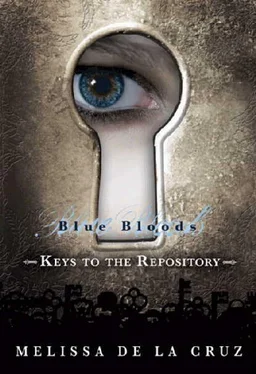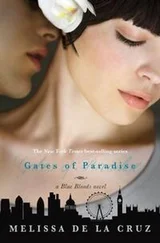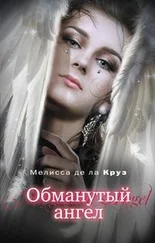For my family: Mike, Mattie, Mom, Aina, Steve, Nicholas, Joseph, Chit, and Christina, and the memory of Pop
The possession of knowledge does not kill the sense of wonder and mystery. There is always more mystery.
—Anaïs Nin
Dear Constant Reader,When I was growing up, I was a huge fan of Stephen King’s books (I still am). And something I remember so vividly about reading his books is that once in a while he would include a letter to his readers in the introduction. These letters were addressed “Dear Constant Reader” because as he published more and more novels, it became apparent to him that his readers were eating them up—reading them as fast as he could write them, and so he wanted to thank them for that, and to celebrate it as well. In his letters he would give us a little insight into how he wrote his books, what inspired them, how they were written, and what he thought about them once finished.
I loved these letters. I think I secretly enjoyed his letters a little more than the books themselves. As someone who had read all of his books, I was fascinated by this glimpse into their inner workings, and to be told something more about the stories —a background history, an inspiration, a governing idea, maybe—that was not to be found in the pages themselves.
If you are holding this book in your hands, I hope it’s safe for me to assume that you are my Constant Reader, and that you are curious to find out a little more about the world of the
Blue Bloods beyond what has been available in the novels so far. And for that, I am extremely tickled, humbled, and gratified.
It’s always been a dream of mine to write a book like this, a companion book to the series. I absolutely adore companion books. On my shelf next to my many Stephen King novels, you will also find The Dark Tower: A Concordance, Volume 1 and
The Road to the Dark Tower: Exploring Stephen King’s
Magnum Opus.
I’d like to share a little bit about the Blue Bloods se-ries —how I first imagined it and how it came to be and how the work is going. The story behind the story, so to speak. As King says, “Some people don’t want to know how sausage is made; if so, skip this and go ahead to the real meal.” So if you don’t want to hear about the backstory, you don’t have to read this.
But if you do, here it is.
When my editor asked if I ever wanted to try my hand at a horror/fantasy book, I responded with a resounding YES! YES!
YES! As soon as I got off the phone with her, my mind was whirling with so many ideas. I knew from the beginning I wanted to write a big epic fantasy, like my favorite books from childhood: King’s Dark Tower series, Isaac Asimov’s The
Foundation trilogy, J.R.R. Tolkien’s The Lord of the Rings, Anne
Rice’s Vampire Chronicles. But I also wanted to set the story in the modern world, like J.K. Rowling’s wonderful Harry Potter books, which reminded me, as an adult, how pleasurable reading books could be. I especially wanted to set it in New
York City, my home, which I had just left and missed terribly, as we had moved to Los Angeles in late 2003.
It just happened that at the time my editor called, I was tooling around on the Internet and had found a Web site that listed every passenger on the Mayflower, along with their notable descendants. The list was the “lightning bulb” from the beginning: I thought, what if all these wealthy, important, and influential Americans (the list includes the likes of the Bushes and the Roosevelts, but also—which I thought was more interesting—American icons like Oprah and Marilyn Monroe) —what if all these great people had come to be that way because they were . . . (da da dum . . .) UNDEAD? (BWAHAHA-HA-HA.)
My other idea was that I very much wanted to have an origin story for my vampires. I had yet to come across a vampire novel that had one. I wanted a believable explanation for their existence. I had always loved the story of Paradise Lost and found Lucifer’s fall incredibly romantic and tragic. And so: the Mayflower, the New York elite, and vampires as cursed angels who fell with Lucifer—my outline was really starting to take shape.
I imagined a large, sprawling story with a huge cast of characters. Some pieces came into place easily: three girls, three different motivations. Schuyler, the shy girl who might hold the key to the Blue Bloods’ salvation; Mimi, whose superficial façade masks her true nature; and Bliss, who hides a dangerous secret. Other pieces, like how the Lost Colony of
Roanoke figured into the tale, came as I was writingthe first book. Soon I was off and running, and now, five years later, I am more immersed in the story than ever. It is alive in my mind, the
Blue Bloods’ saga dominates talk at my dinner table (my husband is a supportive sounding board), I spend my days turning over plot points, and I can’t sleep if I can’t solve a character’s dilemma.
In these pages you’ll find the mythology of the Blue Bloods explained, some new stories featuring our favorite young vampires, and a sneak peek at what’s to come. I should warn you, The Repository Files, which include character profiles, were written by rather crotchety historians who work for the humorless Committee, so you might find their estimation of the characters a little astringent. Also, while the Repository might think they know everything, careful readers will observe that in certain instances their knowledge is somewhat limited.
Thank you for welcoming the Blue Bloods into your library. I have very much enjoyed the journey that has brought them to your shelves.
I don’t remember how Stephen King said good-bye to his readers, but for me, it’s always a very fond . . . xoxo
Mel
THE REPOSITORY FILES
The following documents you are about to read contain top secret and classified information concerning the history of the
Blue Bloods. These records were compiled and maintained by Conduit Renfield, the Repository’s longest-serving historian, along with higher-ranking scribes and their interns.
The Committee employs a secret underground network of
Wardens, Venators, Conduits, and interns to keep their members safe and also to keep track of their actions and whereabouts. In Blue Bloods (or Repository Record #101), Mimi Force said of the Committee Wardens: “It was eerie how they knew so much about you—almost as if they were always there, watching.” She was right.
ONCE UPON A TIME IN PARADISE
The Fall and Rise of the Blue Bloods
It was the beginning of the end. Lucifer, the Prince of Heaven, the Morningstar, the most beautiful angel of all time, became so enamored with his own beauty and power that he came to believe his light was as great as the Almighty, and that the throne should be his and his alone. And so he gathered his loyal army of angels for the War to End All Wars, and with swords blazing, trumpets blasting, and hellfire in his heart, he came to claim what was not his to claim.
The battle was a day of black smoke and searing flame, clashing swords and cracking whips. Alas, with victory in
Lucifer’s grasp, at the crucial moment to deliver the crushing blow, the twin Angels of the Apocalypse—Abbadon and Azrael —his most loyal lieutenants, stayed their hand. They betrayed the Morningstar and knelt to the golden sword of Michael instead, turning the tide of battle. But it was too late to save themselves.
All the rogue angels were banished from Heaven. They woke to the cold of the earth as immortals, condemned to walk the world forever, and cursed until the end of days to feed on the blood of their human brethren. Where once they were angels, they were now “vampyres.” Angels of fire and death. Soulless creatures bereft of light and love, with the immortal blue blood running in their veins.
Читать дальше

![Мелисса де ла Круз - Ведьмы Ист-Энда. Приквел - Дневники Белой ведьмы[Witches of East End. Prequel - Diary of the White Witch]](/books/87885/melissa-de-la-kruz-vedmy-ist-thumb.webp)


![Мелисса де ла Круз - Кровавый Валентин[любительский перевод]](/books/194687/melissa-de-la-kruz-krovavyj-valentin-lyubitelskij-thumb.webp)







